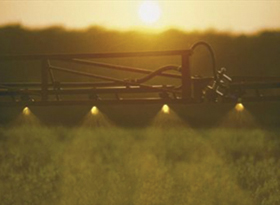Learning by Doing; Importance of Innovators and Early Adopters – Part 2
“In the first five years of the annual ryegrass cover crop project in the Midwest, there was a lot of hand-holding going on as we learned what annual ryegrass could do, and most importantly, how to modify agricultural practices to make cover crops successful,” said Nick Bowers, Oregon grass seed grower and cover crop proponent. “Most of those who started trying cover crops early were already practicing no-till, so adding cover crops was an easier lift.”
And when it came to determine who was teaching who the most, it was a back-and-forth thing, for sure. “We had no idea how much we didn’t know about annual ryegrass,” Nick continued, “other than how it worked in Oregon and in the south, where most of our seed had gone for years. In the first decade of the project, we had some spotty successes because of that lack of knowledge. First, the seed we sent back wasn’t always able to withstand tough winter conditions – sub freezing temperatures, wind-chill and no snow, for example. We originally recommended that the annual ryegrass seed be planted in October, after corn harvest. And we wouldn’t figure out for a decade the effect that residual herbicide in a field could have on the next year’s cover crop, whether to diminish or even wipe out the next year’s growth.”
As for the problem of winterkill, Nick and many other Oregon growers worked on research trials in the Midwest and Oregon, trying to build more hardiness into new annual ryegrass varieties. The Commission hired Mike Plumer and Dan Towery to conduct years’ worth of trials, and other university agronomists began to work in tandem.
It worried some that building a more tolerant annual ryegrass would make it harder to kill in the spring. So, the trials included that piece. If annual ryegrass was to be an accepted new crop in the Corn Belt, it had better grow easily, grow healthy, and die when sprayed with the proper mixture of herbicide. In the past 25 years, we’ve had no reports of annual ryegrass getting out of control, and that says a lot about the amount of education, because if you mismanage cover crops, bad things can happen. As the data grew, the Oregon team would alternate attendance at field day demonstrations and annual trade shows. Pamphlets, research papers, and videos helped to spread the knowledge. The trickle of interest became a torrent.

“When we started,” Nick continued, “we thought the best way to plant annual ryegrass was to drill it after corn harvest in the fall. Since then our cooperating partners began aerial application of seed, flying it on while corn and soybeans were still in the field. That’s now the most popular way to plant. And more recently, people have found increasing benefits from ‘interseeding’ cover crops into the fields in the spring, when corn is basically knee-high.”
“As for the residual herbicide effect, we’re learning alongside those continuing to experiment, including lots of universities, and we share their successes and failures readily.” Check out this flyer we produced about that .
Nick’s work in the Midwest also led to a new business for he and a neighboring farmer, Wayne Kizer, a seed growing/distribution company, KB Seed Solutions, whose sole purpose is to provide high quality seed to those using cover crops. “We started the company 14 years ago,” Nick said, because it became clear that people wanted to know precisely what was in each bag of seed – that it would do what it was supposed to do. Midwest customers wanted to be sure that what they were planting was designed to work well in that environment.”
